Oct. 31 2015 For the last several years we have been fortunate to stay with Betty and her family. The family has cleaned and prepared their rooms on the second level of their house for our exclusive two-night use. The covered balcony and terrace become our common rooms for dining and sharing. Besides the comfortable accomodation, the house is close to the cemetary and kite festival grounds. We stashed our things in our rooms, which are really the family's rooms, cleaned and prepared for our two night stay, each room with its own key. Betty's family will take to the couches in their living room and no one will mind, it is all a part of this special time. Our group hurried to the terrace which overlooks the Kachiquel Maya pueblo of Sumpango, Sacatepequez and the mountains which frame it. Betty's son, Victor served us lunch -- Guatemala's famous pepión with hot tortillias and treated us to some close up kite flying with his cousins.
The Giant Kite festival on November 1st attracts thousands of visitors to Sumpango. The people of Sumpango are not only busy making giant kites, but are preparing for the biggest tourist event of their year. It is estimated that 25% of the yearly income comes from sales associated with the festival. In a country where the average wage is $2.00 a day, this is an important opportunity to gather enough money for school supplies and maintaining the home. At the same time, the festival itself is free and the kitemakers themselves pay for the construction of their kites, a significant expenditure of limited funds. Learning the cost of constructing these kites made me determined to channel the money from this tour directly into the hands of the kitemakers and to the people of Sumpango.
More immediately, grand entreprenuerial ventures were unfolding on the main floor of our homestay. Betty and her sisters, mother, mother-in-law and a couple of neighbors were chopping a mountain of carrots in the dining room surrounded by large plastic bowls where corn was softening before being ground for tortillas. When they finished the carrots they began mincing pyramids of onions. The six women talked and joked with each other as they worked the onions, dry eyed, while we began to tear up and opened the door for more air. They were making food for 300 plates to sell festival goers the next day.
In the next room, Victor, his uncle and cousins affixed bridles to the traditional eight-sided Guatemalan kites which they would offer for sale not only for the festival, but throughout the kite flying months of November and December.
| This year, seven kites were airborne at the same time, one of them 6 meters. This is the most kites by far I have seen in air, many crash without achieving significant elevation. For the first time, an all-women's group won the competition. | The Giant kites are flown throughout the day according to size. Hoisting the larger kites into the air requires teams of barrileteros, as well as good wind, as the kites are quite heavy and the flyers must maneuver through crowds of festival attendees. |
Nov. 2 In the morning after our breakfast of scrambled eggs, fresh cheese, frijoles, fresh salsa, steaming tortillas and coffee, we gathered with Julio to make our own kites, images of the giants from yesterday fresh in our minds. And once again, after making many Guatemalan kites, I am confronted with the art of applying white glue to fragile pieces of Chinese tissue paper without causing distortions. It is no wonder that it is applied with fine paint brushes. Still the creativity of the group is always a delightful surprise!
From there we wandered up to the cemetery where it is traditional to fly kites to the ancestors, while scaring away the evil spirits with the fluttering of the flejas, the strips of paper on the sides of the kite. Vilma, and her neighbor brought us a feast of chicken and pasta salad,as we ate among the brightly painted tombs under the warm cloudless sky.




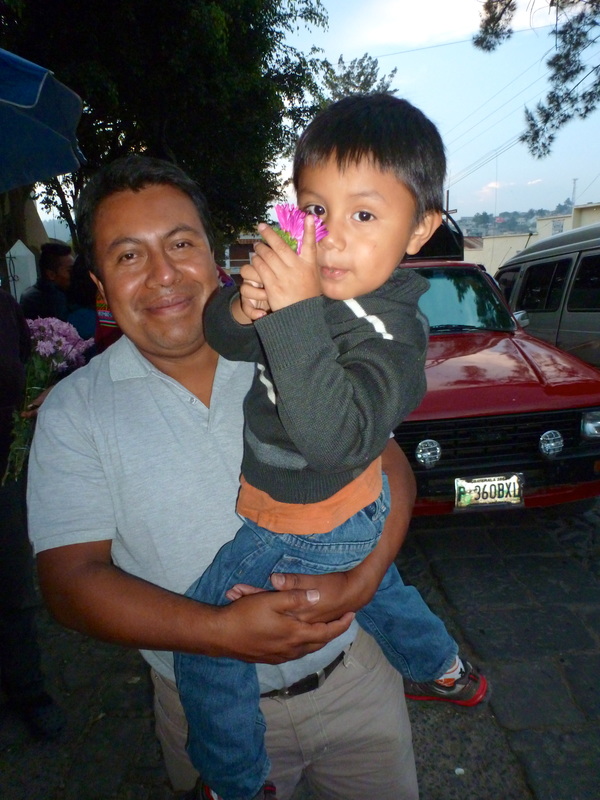


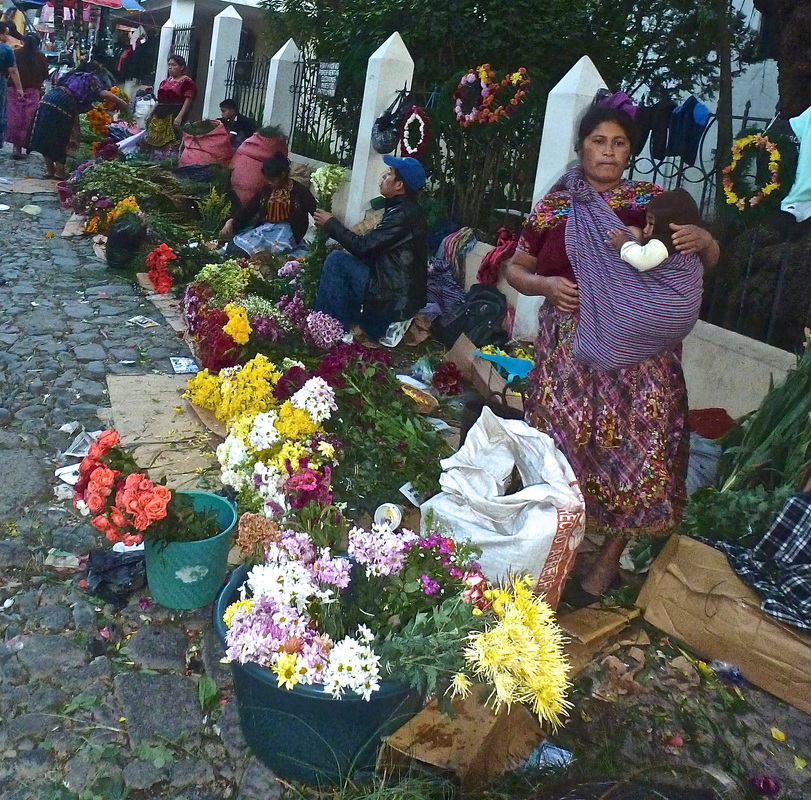

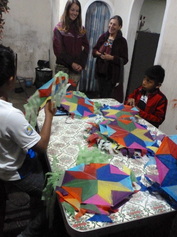


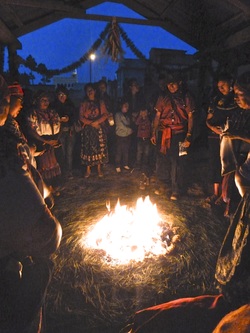










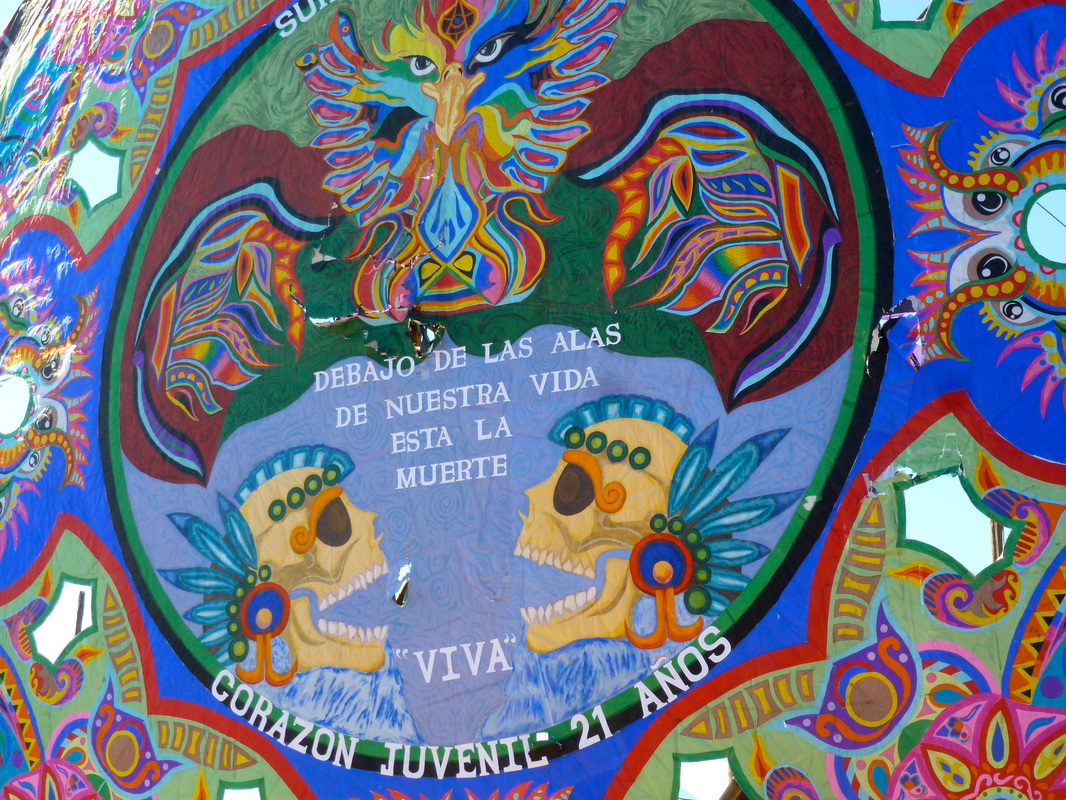













 RSS Feed
RSS Feed

